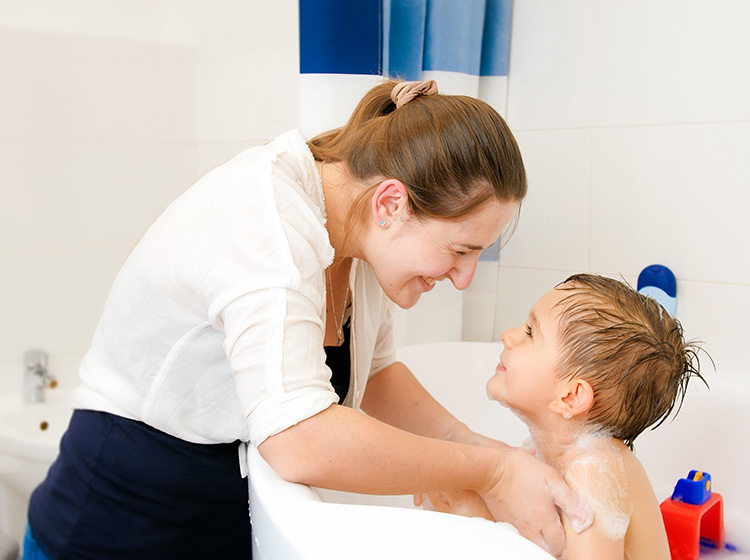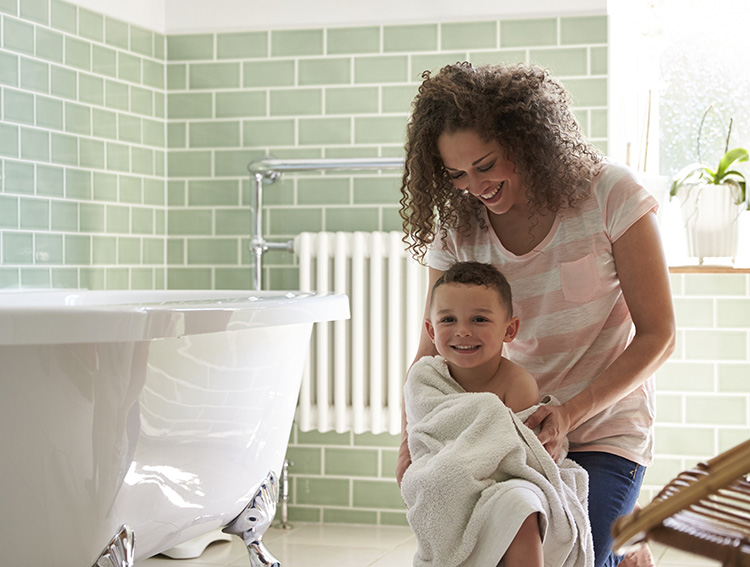How do I practice language at home with my child?
*For purposes of this blog, gender of child was randomly chosen as “she/her/hers”
If your child has a speech and language delay, you want to do as much as you can to help her! You have her on the waitlist for publicly funded speech therapy. You may even have weekly private speech therapy sessions for her. You want to take advantage of the time that you’re with her at home to practice. But life is busy – how does a working parent with kids find the time?
The good news is, helping your child learn language at home does not take any extra time at all. Yes – you read that right! You can practice language while you are already doing all the tasks that come with having a toddler: dressing, feeding, bathing, departure/arrival routines etc. These are often daily routines which follow a similar sequence each time – ideal for teaching language!
Bath Time Routine
For this blog, we will focus on adding language to bath time.
Bath time is likely already part of your daily routine, so let’s take a look at how we can enrich our toddler’s language during this time.

Joint Attention/Turn-taking
For children two years and younger, joint attention and turn-taking is a nice place to start. Play together with a bath toy or activity like blowing bubbles. You can blow bubbles and then pause and look at your child. If your child looks back at you – that is joint attention! Your child is watching and indicating with her focus that she’d like the activity repeated. If your child then imitates you and blows bubbles herself – that is turn-taking! Try different types of these repetitive activities in the bath (e.g., pouring water out of a cup, splashing, dropping a toy into the water etc.).
Vocabulary
You can enrich vocabulary during bath time by labeling actions in your routines:
- Body parts: label the body part that you wash. For example, “Wash toes! Wash nose! Wash ears!”
- Descriptive concepts: wet, dry, warm, cold, slippery, soapy. For example, “We are wet! Wet water! Let’s get dry! Dry and warm.”
- Verbs (action words): scrub, clean, wash, rinse, drain, pour, rub, dry. Pair these words with the action. For example, “splash!” as you splash the water.
Sequencing
For older children, you can use bath time as an opportunity to talk about what you did that day. Use words like “first”, “next”, “then”, “before” and “after” to start familiarizing your child with sequencing words. If your child has morning baths, use bath time as an opportunity to talk about what you will do that day to introduce and practice future tense.
Asking & Answering Questions
Bath time is also a great time to practice asking and answering questions with your older toddlers. Try to practice different types of ‘wh’ questions like “who”, “what” and “where”. You can ask questions about the bath toys, e.g., “where is the frog?” – “he’s under the cup.” You could also ask questions about the day. “Who came over?” “Grandma!” “Where did you go?” “The park.” “What did you do?” “We were swinging”.
Pretend/Imaginative Play
Bath time is a great opportunity for your child to take part in pretend play. Give your child a plastic doll and let her wash her own baby. Model the language as your child washes the doll’s body parts. There are also lots of opportunities to add imaginative play to bath time.
Throw a few different objects into the tub (e.g., cups, spoons, cloths) and help your child imagine all the different things these objects can be. For example, a plastic cup could be a boat, submarine or volcano! A cloth could be a net to trap bath toys, or a cape for her to wear! For more advanced language practice, take turns making up stories and adventures.

